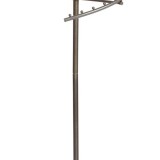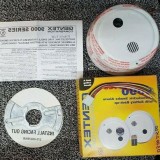Essential Aspects of Traditional Alarm Clock Sound Design
The traditional alarm clock sound, a ubiquitous feature in households worldwide, plays a crucial role in awakening individuals from slumber. Its distinctive characteristics have evolved over time, shaped by both scientific principles and cultural preferences. This article delves into the essential aspects of traditional alarm clock sound design, exploring its function, components, and how these elements combine to create an effective wake-up call.
Purpose of Alarm Clock Sounds
The primary purpose of an alarm clock sound is to disrupt sleep and trigger a state of alertness in the individual. It serves as an external stimulus that overcomes the body's natural inclination to remain asleep. By startling or startling the sleeper, the sound effectively breaks the sleep cycle and initiates the process of waking up.
Components of Traditional Alarm Clock Sounds
Traditional alarm clock sounds typically consist of several key components:
- Frequency: The frequency of the sound, measured in hertz (Hz), determines its pitch. Higher frequencies, such as those produced by bells or whistles, are more effective at capturing attention and triggering an awakening response.
- Loudness: The loudness of the sound, measured in decibels (dB), determines its volume. A sufficiently loud sound is necessary to overcome the background noise and reach the sleeper's subconscious mind.
- Timbre: The timbre of the sound refers to its unique tonal qualities, which distinguish it from other sounds of the same frequency and loudness. Different timbres, such as the harsh buzz of a buzzer or the soothing chime of a bell, can evoke different emotional responses.
Optimizing Alarm Clock Sound Design
To create an effective alarm clock sound, manufacturers carefully consider the interaction between these components. A balance of high frequency, moderate loudness, and a distinctive timbre can create a sound that is both jarring enough to wake the sleeper but not excessively unpleasant.
Cultural Variations in Alarm Clock Sounds
Cultural preferences play a role in the design of alarm clock sounds. In some cultures, such as Japan, gentle and melodic alarm sounds are preferred, while in others, such as the United States, more aggressive and startling sounds are common. These variations reflect cultural differences in attitudes towards sleep, punctuality, and personal preferences.
Conclusion
The traditional alarm clock sound is a carefully crafted auditory stimulus designed to disrupt sleep and initiate a wake-up response. Through a combination of high frequency, moderate loudness, and a distinctive timbre, alarm clock sounds effectively jolt individuals out of slumber, ensuring they start their day on time. As society continues to evolve, it is likely that alarm clock sound design will adapt to meet the changing needs and preferences of individuals and cultures worldwide.

Alarm Clock Sound Free Wav Orange Sounds

How To Set Alarm Sharp Quartz Og Clock Sound Test

Alarm Clock Wikipedia

4 5 Nickel Classic Twin Bell Alarm Clock Westclox Target

Equity By La Crosse Og 4 5 In Round Gold Metal Twin Bell Keywind Alarm Clock 13012 The Home Depot

The 7 Best Alarm Clocks Of 2024 Reviews By Wirecutter

Bellman Classic Vibrating Alarm Clock

Wooden Quiet Og Silent Alarm Clock Natural Wood Minimalist Design Snooze No Cable Gentle Sound Gift For Friends Oneclock

Alarm Clock Eeekit Mini Small Battery Operated Og Simple Stylish Portable Travel With Night Light For Traveling Backng Desk Bedrooms Black Com

The 7 Best Alarm Clocks Of 2024 Reviews By Wirecutter








